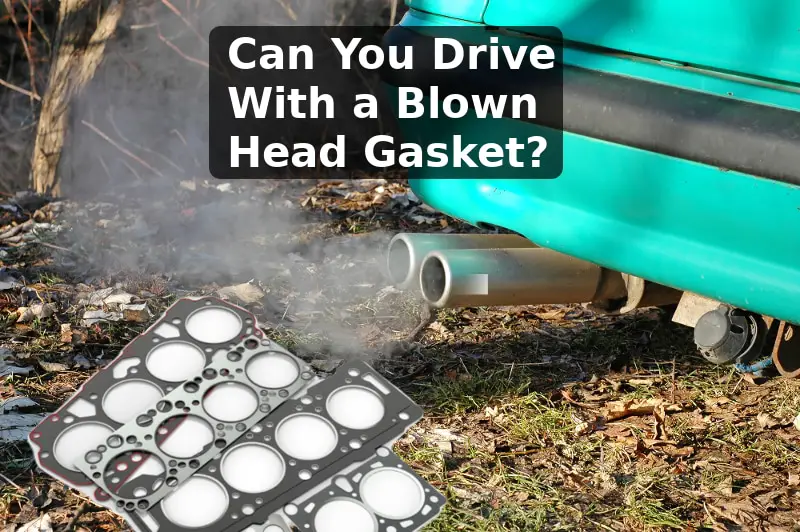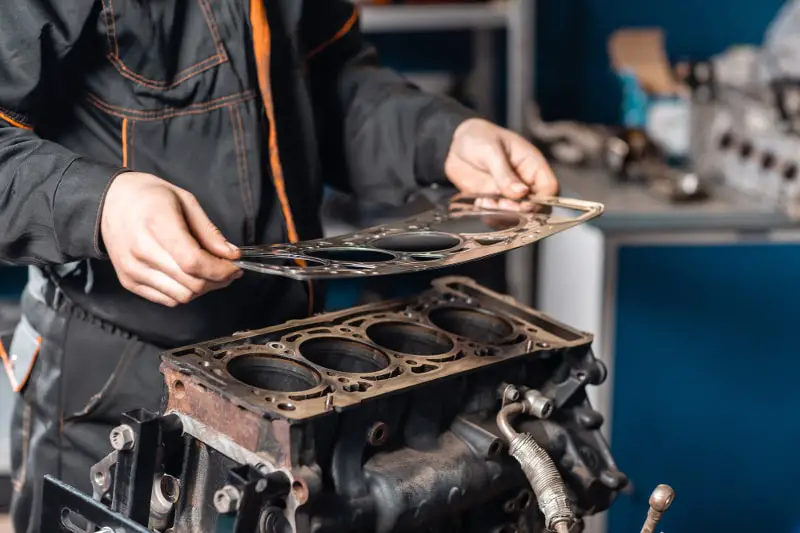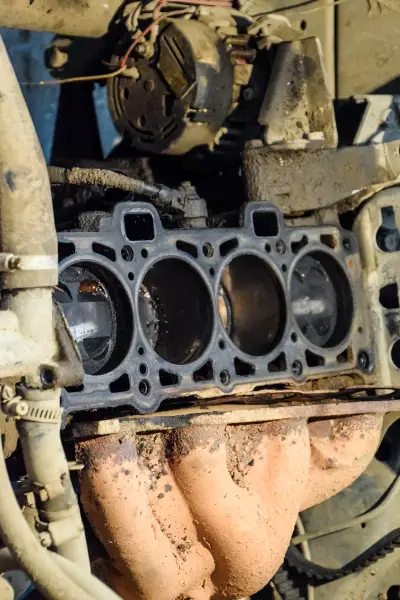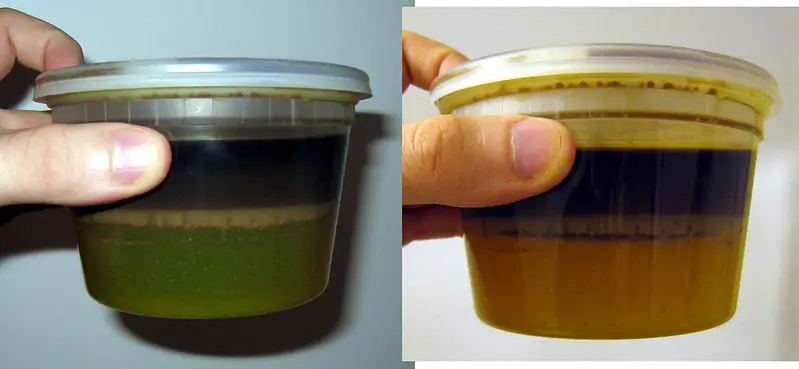You’ve probably heard about a head gasket failure at least once in your life. It’s a problem that many drivers face. Maybe you have a blown head gasket in your vehicle now? If you do, then you’re probably asking, “Can you drive with a blown head gasket?”
That question doesn’t have a simple answer. You will have to examine several things to determine whether you can keep driving your car if you have a damaged head gasket. Here’s some information about head gaskets for you to read.

What Is a Head Gasket?
The head gasket is one of many sealing materials that go inside the engine. It sits directly between the cylinder head and block of your motor. Manufacturers use steel, copper, or alternative components to create the gasket. A typical head gasket has a rectangular border with circular holes on the inside for each cylinder. V6 and V8 model vehicles have two head gaskets.

Why a Head Gasket Is Important
The head gasket the most crucial component in the vehicle because it seals oil, coolant, and compression. It keeps the water and oil in their appropriate compartments, and it keeps the compression inside the motor where it belongs. A lot of damage can occur when the gasket fails. Even a small tear in the gasket can cause the air/fuel mixture to leak out of your car. It can also cause substances such as oil, water, and antifreeze to intermix. The loss of compression will cause your vehicle to lose massive amounts of power. Oil and coolant contamination can break down the intricate parts of your motor. Therefore, head gasket failure is a severe issue. You could end up blowing the engine if you do not fix the problem quickly.
Why Head Gaskets Blow
Your head gasket can fail for a variety of reasons.
- Overheating – This is the most common reason the fail. Engines can get too hot because of low oil or antifreeze, cooling system issues (faulty thermostat), or other problems. This situation can crush the gasket armor that goes around the cylinder.
- Poor Design – Some older vehicles had poorly designed head gaskets made of materials that couldn’t handle the pressure. As time passed, manufacturers started using materials such as reinforced steel to develop the gaskets.
- Timing issues – An incorrectly timed engine can combust fuel at the wrong time. That can cause a lot of pressure on the cylinders, and the head gasket can blow under pressure.
- Thermal stresses – Some drivers drive off in their vehicles before the engine warms up. This is a common cause of failure because it stresses the gasket and causes it to expand too quickly. Cracks can result from that scenario.
- Age and mileage – Nothing lasts forever right? It applies to you engine also. Manufacturers design the average head gasket to last for about 160,000 miles. Therefore, you could develop head gasket issues if you’ve driven your vehicle beyond that threshold.

Symptoms of a Blown Head Gasket
A variety of symptoms can give you a clue about a head gasket problem. Here’s the common symptoms to watch for:
- White Smoke from Exhaust
- Coolant in Oil
- Overheating
- OBD2 Error Codes
- Poor fuel mileage
White Smoke from Exhaust
One of the most common signs of a blown head gasket is the infamous white smoke from the exhaust pipe. Coolant leaks into the combustion chamber as the intake strokes. It then burns during the combustion process, and that causes the white smoke to appear. The cloud of smoke is usually very thick and consistent.
Coolant in Oil

You might also find that your antifreeze has mixed with the oil if you have a blown head gasket.
To check this, remove the radiator cap and peak into the coolant reservoir (a flashlight might be helpful). The fluid will present itself as a thick, brown milkshake-like substance. If you have green coolant, you’ll see dark specs of oil show up.
Your oil dipstick may also show the same milky substance.
Overheating
Constant overheating is a common symptom of a blown head gasket. You’re likely to experience overheating as your car loses coolant continually.
OBD2 Error Code
Surely you’ve seen a Check Engine Light (CEL) illuminate on your dashboard. When your temps get too high, your ECT sensor is going to start sending errors to your car’s ECM which is going to light up that MIL (Malfunction Indicator Lamp). The usual code I see for this is: P0128
Poor Fuel Mileage
If your engine keeps running, you might also notice extremely poor gas mileage. That occurs because you are losing the air-fuel mixture. Coolant may also be leaking into one of the cylinders, and that could be interfering with the combustion process. Both of those situations could easily affect the amount of fuel you need.
You may be interested: Signs of a blown head gasket
How to Test for Head Gasket Failure
These gaskets take a lot of labor to replace. That means an expensive mechanic bill!
Before taking your ride to the mechanic, here’s how you can make sure the head gasket is failing.
2CarPros did a great video overview.
- Look for discolored antifreeze – One of the most straightforward tests is to look for the milky brown substance under your radiator cap or on your oil dipstick. You can also pull your radiator cap off and look for bubbles. The bubbles come from exhaust gases that have interfered with the coolant.
- Test your spark plugs – You must first remove your spark plugs. Examine them to see if one or more of them is wet or burned. Pressurize the cooling system by cranking your engine. You will see coolant spray out from the spark plug holes if you have a blown head gasket.
- Conduct a compression check – You’ll need to test 1 cylinder at a time. If one is failing, then the compression from one cylinder will seep over into one of the others. You can conduct a compression check by removing the spark plugs and then threading the compression manually. After you finish, you’ll need to crank your engine and review the readings you get from the compression checker. You will see a text of 0 PSI on two side-by-side cylinders if your compression is shot.
- Chemical test – You can buy chemicals that will change colors if you have blown your head gasket. Something like the Lisle 75500 can be a good kit to determine quickly if you have a failure.
How Long Can You Drive With a Blown Head Gasket?
It’s hard to say how long you can operate your car with a blown head gasket. The remaining drive time will depend on where the crack or tear is and the symptoms the vehicle manifests. Some engines will stop operating altogether within one day. You might be able to drive the car for a week, or it may last for a few months if you use a temporary fix on it.
One thing is for sure: You will have to get repairs sooner than later.
Temporary Fixes
A blown head gasket is a problem that you need to address immediately. You can do this by using a temporary fix or a permanent fix.
Manufacturers sell head gasket sealers that may seal the gasket temporarily. They are generally easy to use. You can pour most of them into your radiator and then warm the car up for a specific amount of time. Bars Leaks, BlueDevil, and K-Seal re examples of companies that manufacture such products. They are designed only for temporary use. You should still take your car to a mechanic for assistance.
Read more about head gasket sealants and temporary fixes.
Permanent Fixes
There are two permanent fixes to head gasket failure.
- Replace the head gasket (read our guide to remove the head)
- Rebuild motor
- Install a new motor
The method you choose to fix your gasket will depend on your budget and the age of your vehicle. The older your car, pickup, or SUV is, the more you may want to consider having someone rebuild your motor. We say this because other engine seals and components may wear after you replace your head gasket if your vehicle is aged. A head gasket replacement job requires the mechanic to remove the entire top end of the motor. This person could give you an overhaul while he or she has the engine exposed.
Repair Costs
The cost of a head gasket replacement can vary according to the shop location, labor, parts, and so on. As we mentioned before, the mechanic will have to remove the top half of the motor to perform the repairs. Then the individual may have to have the head shaved or resurfaced. After replacing the head gasket, the mechanic will have to put the top end of the motor back together.
- Shop labor time is eight to 10 hours
- Parts will generally cost under $200
You’ll spend at least $1,200 at a shop that has a labor rate of $100 to replace a blown head gasket. Some shops charge more, and some shops cost less.
Long block engine replacement is roughly $1,000, and short block replacement can be as high as $2,500. You might be able to buy a rebuilt engine for a reasonable price and have someone swap it for the one you have. As we said, it depends on the age of your car and other factors such as the repair shop’s pricing grid.
You can replace your head gasket yourself if you have the tools and the patience to do so. The labor may take you several days or weeks if this is your first time changing it.
How to Prevent Head Gasket Failure
You can prevent head gasket failure by using the following smart tips:
- Warm the car up before you drive it in the winter.
- Always check your coolant and oil levels.
- Watch your temperature gauge at all times.
- Pullover if the gauge rises above the three-quarter mark.
- Never let the temperature gauge get into the red.
- Baby your car when you drive.
- Get regular tune-ups and timing adjustments.
- Make sure that the mechanic torques the new head gasket to specifications.
- Use new head gasket bolts when replacing the gasket.
- Use a reinforced head gasket.
Conclusion
That’s all you need to know about head gasket failure, prevention, and repairs. Can you drive with a blown head gasket? Yes, but you should only drive if it’s an emergency, and you have no other way to get to your destination. You should keep your eye on the temperature gauge when you drive and pull over immediately if you notice the signs of overheating. Take it slow, and keep your coolants full while you’re operating the vehicle. Please take the car to a mechanic to have that person perform the necessary repairs if you don’t feel comfortable doing it yourself. If you treat the problem quickly, you can save your car’s motor and keep the vehicle for many more years.
Sources:
https://www.carthrottle.com/post/head-gasket-failure-check-yourself-before-you-wreck-yourself/
https://www.thomasnet.com/articles/hardware/prevent-gasket-failure/
https://haynes.com/en-gb/tips-tutorials/what-is-head-gasket
https://automobileremedy.com/blog/how-to-test-for-a-blown-head-gasket/
https://gobdp.com/blog/what-are-the-symptoms-of-a-blown-head-gasket/



